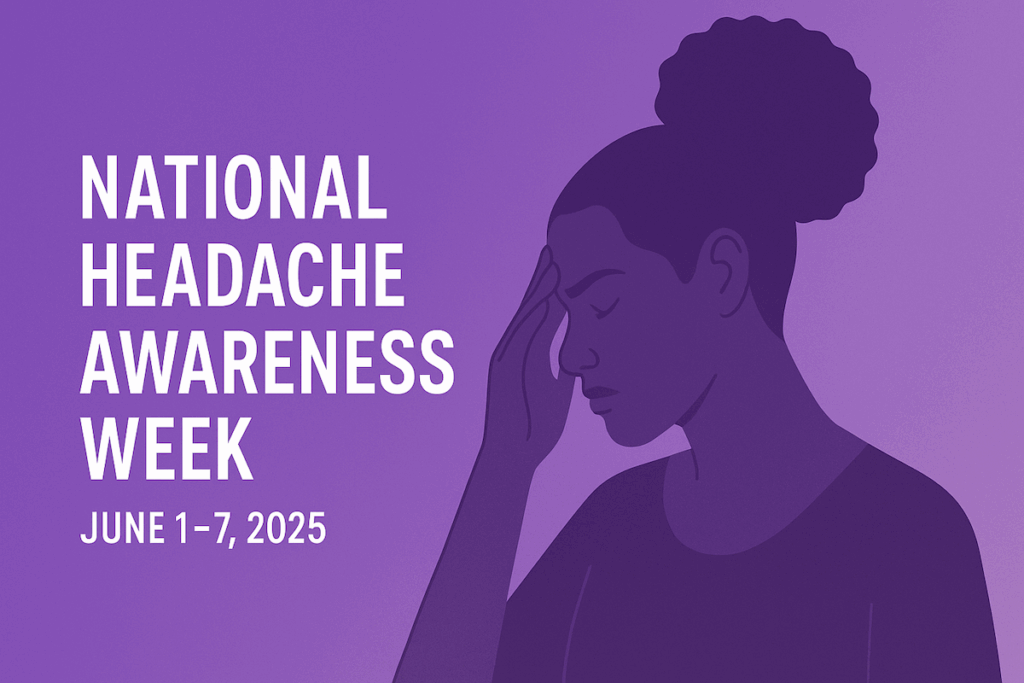Headaches are one of the most common health complaints in the world, affecting nearly everyone at some point. In fact, studies show that more than half of adults globally have experienced a headache in the last year. But just because they’re common doesn’t mean they should be ignored. For many, headaches can be a recurring, disruptive part of daily life. National Headache Awareness Week is a chance to pause, reflect, and start treating that pain with the attention and care it deserves. Whether it’s the steady tension from stress or the sharp, pulsing pain of a migraine, your discomfort is real, and you don’t have to just “deal with it.”

Understanding the Types and Triggers
There are many types of headaches, and knowing the difference can help you manage them better. Tension headaches usually feel like a tight band around the head and are often caused by stress, poor posture, or long hours at a desk. Migraines are more intense, they often come with nausea, light sensitivity, or even visual disturbances. Cluster headaches are less common but extremely painful and tend to occur in cycles. Then there are sinus headaches, which create pressure around the forehead, eyes, and cheeks, especially during allergy season or illness. While everyone’s body is different, certain patterns tend to show up. Many headaches are triggered by dehydration, skipped meals, lack of sleep, stress, or even staring at screens for too long. Hormonal shifts and specific foods like chocolate, aged cheese, or processed meats can also play a role. That’s why keeping track of when your headaches happen, along with what you’ve eaten, how well you’ve slept, and how much water you’ve had, can reveal helpful clues.Finding Relief in Everyday Habits
Relief isn’t always found in a bottle of painkillers. Sometimes it starts with consistent habits. Drinking more water, taking regular breaks from screens, and getting enough sleep can go a long way. Moving your body—even with something as simple as a walk or a stretch—can release tension that builds up during the day. Managing stress through mindfulness, breathwork, or even journaling can also help reduce the intensity and frequency of headaches over time.When to Seek Help
If you find yourself dealing with headaches more days than not, or if the pain is interfering with your ability to function, it may be time to check in with a doctor. Some headaches can be a sign of an underlying condition. You should also seek help if the pain is sudden, severe, or comes with vision loss, confusion, numbness, or difficulty speaking. It’s always better to get things checked out than to push through uncertainty. Final Thoughts This week isn’t just about raising awareness—it’s about tuning in. Your body is constantly giving you information, and headaches are one of the ways it speaks. You don’t have to push through the pain. You can pause. Reflect. Ask for support. Small steps matter—especially when it comes to your health. If headaches have been showing up more than usual, consider this your gentle nudge to pay attention and take care.This week isn’t just about raising awareness—it’s about tuning in. Your body is constantly giving you information, and headaches are one of the ways it speaks. You don’t have to push through the pain. You can pause. Reflect. Ask for support. Small steps matter—especially when it comes to your health.
If headaches have been showing up more than usual, consider this your gentle nudge to pay attention and take care. For more resources: https://headaches.org/resources/


